In Japan stierf illustrator Toshio Saeki.
Continue readingTag Archives: erotica
RIP Kohei Yoshiyuki (1946 – 2022)
Kohei Yoshiyuki was a Japanese photographer known for his book The Park (1979, 2007) which shows people cruising for sex in Tokyo parks in the 1970s.
The book was hailed by Martin Parr as “a brilliant piece of social documentation, catching perfectly the loneliness, sadness and desperation that so often accompany sexual or human relationships in a big, hard metropolis like Tokyo.”
Of all the deads I posted about since the death of Elza Soares, this one is the most interesting one. Erotomania is still my main affliction. Long live public sex and its voyeurs.
RIP Almudena Grandes (1960 – 2021)
Almudena Grandes was a Spanish writer best-known for her novel The Ages of Lulu (1989), a classic of Spanish erotica.
Bigas Luna adapted the novel to a film of the same name a year later.
RIP Peter Weiermair (1944 – 2021)
Via fellow erotomaniac Hans-Jürgen Döpp it came to my attention that German art historian and curator Peter Weiermair has died. He is the author of such books as The Nude. Ideal and Reality.
What was interesting, just after he died, I googled him and I switched to Google images. I found photo books of Ann Mandelbaum and one of Roger Ballen. The one by Mandelbaum had a human with a vegetable in his or her mouth.
The one by Ballen was called Outland, and the cover photo depicted two very dirty feet with a hand stuck between them which is holding a puppy it seems.
Ballen’s photo is called “Puppy between Feet”, I learn afterwards.
RIP Emmanuelle Arsan (1932 – 2005)
This happened some time ago. But the general public only found out years later that Emmanuelle Arsan had died. At first it said that it happened in 2007, but later it appeared to be in 2005.
More than any fictional character Emmanuelle was the symbol of the sexually liberated woman, celebrating her new freedom because of the pill, the main cause of the sexual revolution.
The funny thing about this Thai born woman, is that nobody today can confirm that it is she who wrote the Emmanuelle novels, some say it was her husband.
What is certain though, is that my hero Eric Losfeld published the first novel of the series clandestinely in 1959 as Emmanuelle (1959).
About the re-writing that has happened since 1959, the book Censure, autocensure et art d’écrire: de l’antiquité à nos jours (2004) by Jacques Domenech notes that the first version was ‘harder‘, more hardcore.
For the occasion of this post, I watched the Italian film Io, Emmanuelle (1969), which seems a better film than the 1974 Sylvia Kristel vehicle.
But this 1969 version has nothing to do with Emmanuelle.
The name Emmanuelle has gone on to become a by-word for erotic films and conjures up an image of the rotan peacock chair which was used as a publicity shot in the 1974 film starring Sylvia Kristel.
RIP Alex Varenne (1939 – 2020)
Alex Varenne was a French comics artist.
This I know from the time in the late 1980s when I bought L’Écho des savanes and RanXerox was my hero. That time.
Alex Varenne is famous for his erotic comics which were fashionable from the late 1960s onwards. In this short reportage, he tells about his career in erotic comics, how his love life was very rich and full, how he drew from live models, his girlfriends, or friends of this girlfriends, how he used to tell his models stories, how the times have changed, starting in the sexual revolution, the era between the pill and AIDS (“La periode apres la pilule … avant le sida …”) , then the onset of BDSM and current times which are largely masturbatory. He talks about his admiration for Roy Lichtenstein.
Alex Varenne – Itenéraire Libertin (2015)
RIP Edmond Kiraz (1923 – 2020)
Edmond Kiraz was a French-Armenian cartoonist and illustrator.
He is best known for his Parisiennes, his post-war Parisian wafer-thin model girls which first appeared in print in 1966.
RIP Stanley Long (1933 – 2012)
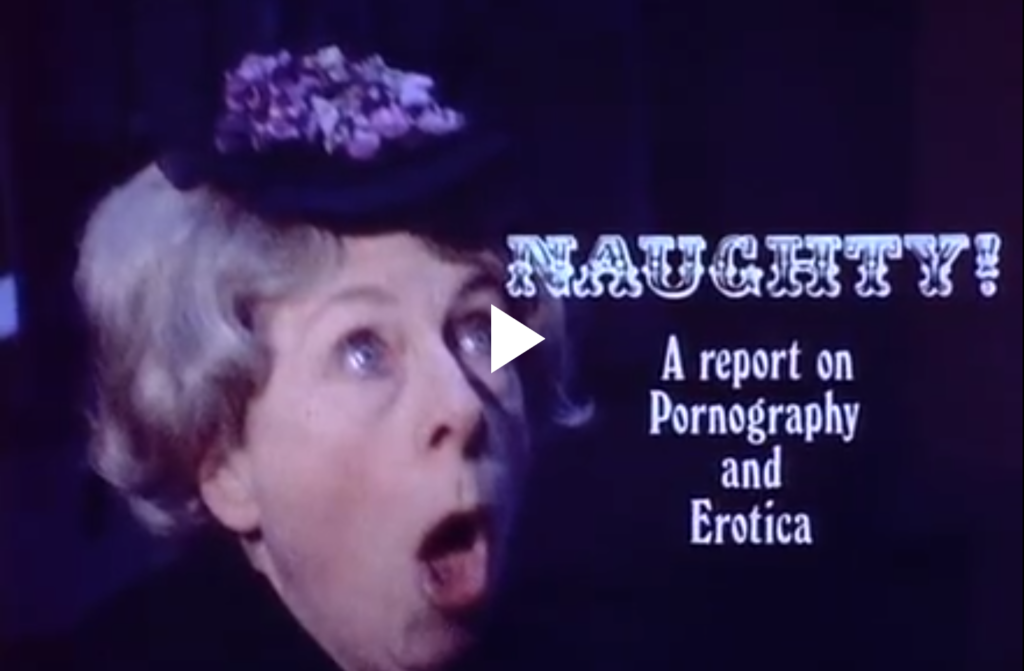
Sometimes a death escapes my attention.
This particular death escaped my attention for eight years.
Stanley Long was a British filmmaker active in what is known as exploitation cinema.
An untypical work, Naughty! (1971) is recommended for including scenes of the Wet Dream Film Festival (1970).
The film is a laudable attempt to fictionalize the history of erotica and is appears to be based on The Other Victorians (1964) which was the first book to revert the received idea of Victorian prudishness. It’s similar to way worse movies such as Sexual Freedom in Denmark (1970).
You can watch Naughty as I just did by following site:https://www.eroticage.net “naughty”. That ‘eroticage.net’ site seems interesting because it has lots of vintage erotica films from the golden age of porn.
P.S. While researching Naughty! I found out that William Levy passed away in 2019.
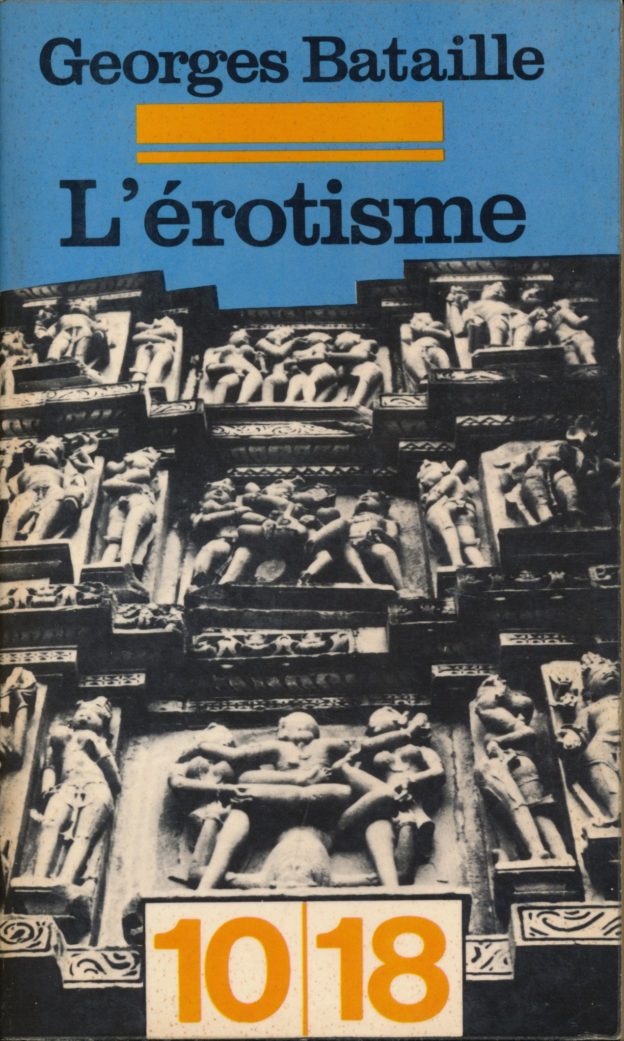
The ‘worries of pleasure’, or, the baseness of Western erotica vs. the exaltedness of Eastern erotica
This is the picture I referred to when in my previous post[1] I mentioned ‘something’ that kindled my interest in oriental erotica, perhaps for the first time.
It is the cover of the book Eroticism by French writer Georges Bataille as it is depicted in Onfray‘s book Le Souci des plaisirs which I bought during my recent visit to Pau and which I read last Thursday.
Bataille’s cover is illustrated with a photo of an Indian erotica masterpiece: a detail from the Kandariya Mahadeva Temple, part of the Khajuraho Group of Monuments.
When I was writing De geschiedenis van de erotiek I already speculated that the conception and experience of sexuality (and ergo erotica) in the east, cannot be that much different from ours in the west:
“In the West, there is an idea that the art of love in the East is more sophisticated than ours. Whether this is true, cannot be said with certainty. After all, what is sophisticated and how can we look into the bedrooms of countless couples who make love every night in the East? Do they make love like we do or is their business conducted in a more tantric way? Hard to ascertain, difficult to refute.” (Geerinck, 2011)
But Onfray seems to disagree and repeats trite clichés on the exaltedness of Eastern sexuality in ‘Le Souci des plaisirs’.
Onfray is right about one thing: the photo of the highly sexual Khajuraho Group of Monuments is totally out of place on the cover of Bataille’s book in the sense that Bataille’s Erotisicism is exclusively about western eroticism.
Bataille owes this to himself.
He should not have written:
“Numerous Indian temples solemnly remind us of the obscenity buried deep in our hearts.”
In the section “Les leçons de la couverture” (The lessons on book covers, pages 118-19) of ‘Le souci des plaisrs’, Onfray comments on this 10/18 edition of George Bataille’s L’Erotisme The subscript to the photo of the cover reads “Dieux et déesses hindous, couples mithunas et apsaras, temple de Kandarya construit sous Vidyadhara (1017-1029), Khajuraho, Madhya Prasesh, Inde.”
Onfray, surprised about the cover, asks rhetorically.
Obscenity? Really? Where?
He answers that obscenity seems to be a Western thing when he says that as far as the affirmation is concerned “that at the bottom of our hearts there is buried obscenity,” this probably holds true for Bataille and Sade and other “nihilists of the flesh”, but certainly not for the contemporary Indians of Khajuraho…” (“Sûrement pas pour les Indiens contemporains de Khajuraho…”)
So I wonder, is obscenity really a purely occidental thing, just as perversion? Is it a coincidence that sadism and masochism are two perversions of sexual love that first came to fruition in the west?
And what about Japan, notorious for its kinkiness?
Is Japan the exception that proves the rule?
Because if sadomasochism is typically Western, why is it to be found elevated to perfection in Japan, a country largely devoid of Christian influence?
Japan is usually regarded as part of the West, ever since its Samsung- and Sony-ization.
So is sexual perversion the dividing line in the East–West dichotomy?
Questions.
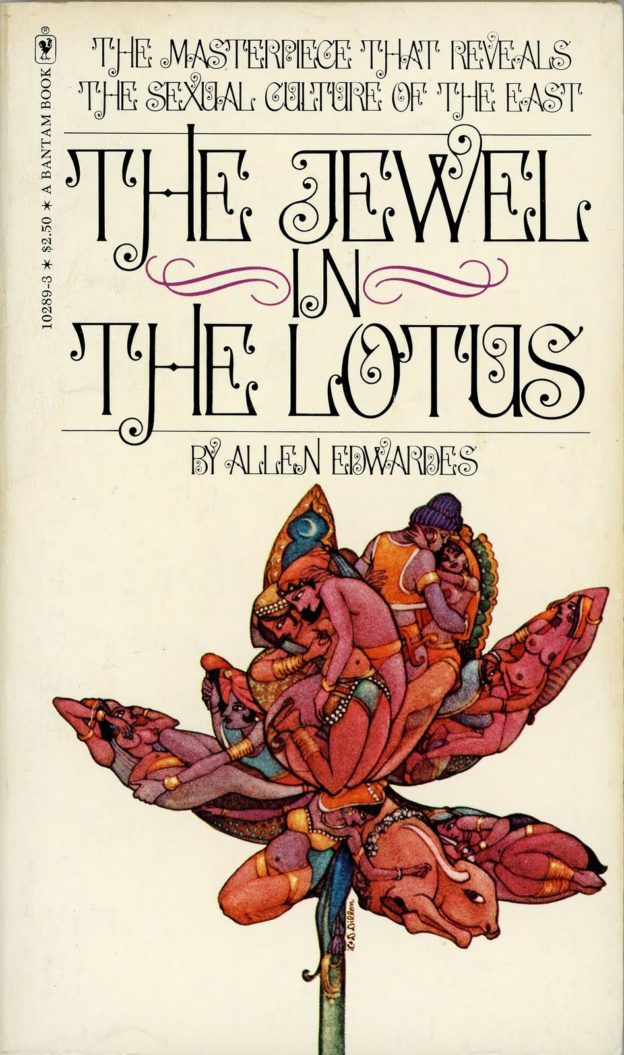
In search of the “breasts like two globes of ivory” citation
Yesterday, as I was browsing through my translation of The History of Erotica, because of my kindled interest in eastern erotica (brought about by Onfray’s book Le Souci des plaisirs (I’ll tell you about this later)), I fell upon the “breasts like two globes of ivory” citation which I had attributed to One Thousand and One Nights when writing my book. The only trouble, when I started googling, I could not find it in digital copies of One Thousand and One Nights, only in a Google Books copy of The Jewel in the Lotus.
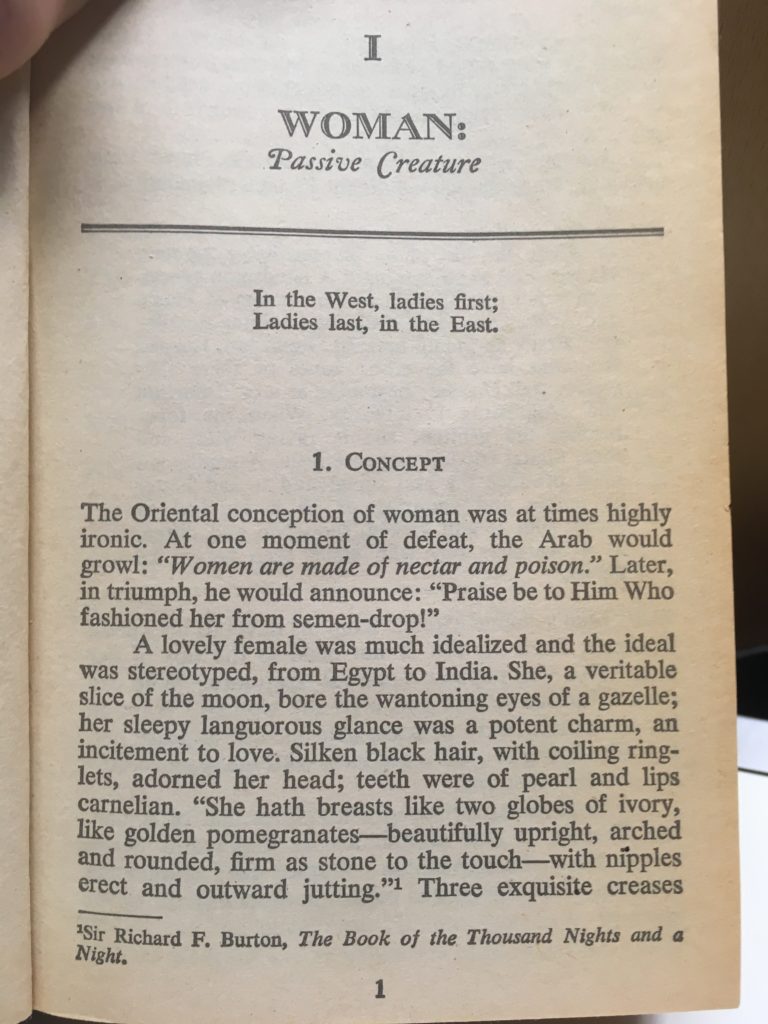
Luck had it that the UA library has The Jewel in the Lotus in its collection so I got it today (13/11/19) and there it was, on page 1, “She hath breasts like two globes of ivory, like golden pomegranates ― beautifully upright, arched and rounded, firm as stone to the touch ― with nipples erect and outward jutting,” with a footnote sourcing it to Burton’s The Book of the Thousand Nights and a Night.
Still, however hard I tried, I could not source it in that book.
But I read the entire Jewel book and here are some notes:
In the preface the The Jewel in the Lotus has “lucrative sinks of iniquity peopled by degenerate niggers,” without footnote, does it refer to Burton?
And on page 49, various descriptions of the female pudenda by Burton:
” When he beheld them stripped of their clothes, his chord stiffened for that looking at them mother-naked he saw what was between their thighs, and that of all kinds, soft and rounded, plump and cushioned ; large-lipped, perfect, redundant and ample, and their faces were as moons and their hair as night upon day”
“He cast a glance at the chief damsel and there was manifest to him what was between her thighs, a goodly rounded dome, like a bowl of silver or crystal.”
“parts softer than silk; white, plumply-rounded, protuberant, resembling for heat the hot room of the bath”
This being a work of sexual anthropology, it references many travelogue-like sources Such as Alexander Hamilton‘s New Account of the East Indies [1]:
“The Veyraugee, an austere type of Shivite holy man, is a sect of mendicant priests. An early traveler to India” thus described a Veyraugee: I have seen a fanciful Rascal, seven Foot high with a large Turband of his own Hair wreathed about his Head, and his Body bedaubed with Ashes and Water, sitting quite naked under the Shade of a Tree, with pudendum like an ass.”
Burton on harem castration on pp. 174-5, many of which I cannot find the source in Burton’s text:
“begged her to reveal her intent; and finally, after I was well secured, she said unto me: ‘I bear the intention of removing thy precious stones, the honours of thy yard. I must also apply the blade to thy pizzle.” –unsourced
“and I wept over myself for that I was become even as a woman, without manly tool like other men.” [2]
One of the most valuable bits of The Jewel is its bibliography, which shows some overlap with Ethnography : Castes and Tribes. Main sources are R. F. Burton, Jean-Antoine Dubois (Hindu Manners), Paul Lacroix, Kama Kalpa by P Thomas.
“The Turk ruled the Arab, for there thrived in him savage ambition. The Arab possessed subtle genius, but the Turk had keen emotional drive.”
Note:
“This pattern of temperament has certainly not changed, as witnessed by the current Middle Eastern crisis.”–p. 187″It was the starving negro hunting the elephant, the starving Arab hunting the Negro, and the ravenous Turk hunting the Arab to hunt the Negro.”, source: The Mahdi of Allah, Richard. A. Bermann
The book mentions the braguette, and cites the Essays by Montaigne on this regard.
A few days later, it dawned upon me where I had found the “breasts like two globes of ivory” citation, it was in The Erotic Arts, there on page 84 is the famous quote. It refers to footnote 9 on page 444 which refers to Edwardes again.
But still, mysteriously, I cannot find it in Burton’s online texts.
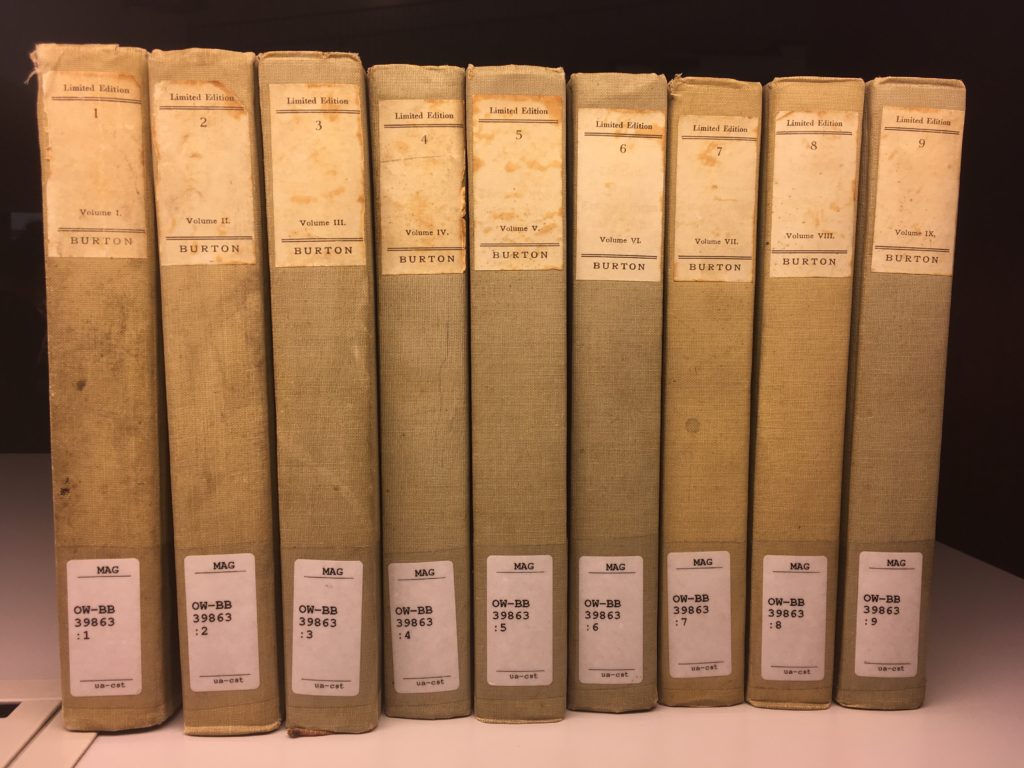
A few days later, I discover that my library has Burton’s translation in its collection, kept in the warehouse. I order it and when it came, surprise, nine volumes only, the tenth, which features the so-called “Terminal Essay” which I was most looking forward to, was not in the collection anymore, I imagine it stolen.
